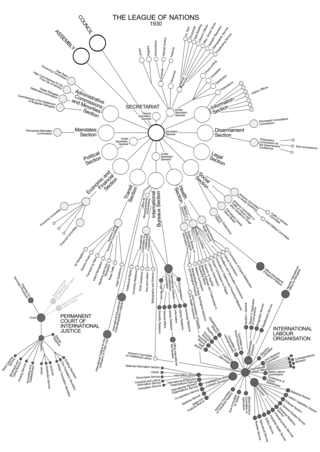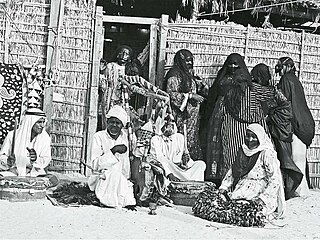
Abolitionism, or the abolitionist movement, is the movement to end slavery and liberate slaves around the world.

Anti-Slavery International, founded as the British and Foreign Anti-Slavery Society in 1839, is an international non-governmental organisation, registered charity and advocacy group, based in the United Kingdom. It is the world's oldest international human rights organisation, and works exclusively against slavery and related abuses.

Abdullah Yahya al-Sallal was a Yemeni military officer who was the leader of the North Yemeni Revolution of 1962 and served as the first President of the Yemen Arab Republic from 27 September 1962 until his removal on 5 November 1967. It was his government that abolished slavery in Yemen.

The 1926 Slavery Convention or the Convention to Suppress the Slave Trade and Slavery is an international treaty created under the auspices of the League of Nations and first signed on 25 September 1926. It was registered in League of Nations Treaty Series on 9 March 1927, the same day it went into effect. The objective of the convention is to confirm and advance the suppression of slavery and the slave trade and was extended in 1956 with the Supplementary Convention on the Abolition of Slavery, under the auspices of the United Nations.

The abolition of slavery occurred at different times in different countries. It frequently occurred sequentially in more than one stage – for example, as abolition of the trade in slaves in a specific country, and then as abolition of slavery throughout empires. Each step was usually the result of a separate law or action. This timeline shows abolition laws or actions listed chronologically. It also covers the abolition of serfdom.

The League of Nations was established with three main constitutional organs: the Assembly; the Council; the Permanent Secretariat. The two essential wings of the League were the Permanent Court of International Justice and the International Labour Organization.

Slavery in Bhutan was a common legal, economic, and social institution until its abolition in 1958. In historical records, unfree labourers in Bhutan were referred to as slaves, coolies, and serfs. These labourers originated mostly in and around Bhutan, Assam, and Sikkim, and were the backbone of Bhutan's pre-money feudal economy.
The International Day for the Abolition of Slavery is a yearly event on December 2, organized since 1986 by the United Nations General Assembly.

Slavery in international law is governed by a number of treaties, conventions and declarations. Foremost among these is the Universal Declaration on Human Rights (1948) that states in Article 4: “no one should be held in slavery or servitude, slavery in all of its forms should be eliminated.”

Slavery in Yemen was formally abolished in the 1960s. However, it has been reported that enslavement still occurred in the 21st-century.

Slavery existed in the area which was later to become Oman from antiquity until the 1970s. Oman was united with Zanzibar from the 1690s until 1856, and was a significant center of the Indian Ocean slave trade from Zanzibar in East Africa to the Arabian Peninsula and Iran, a central hub of the regional slave trade, which constituted a large part of its economy.

For most of its history, Qatar practiced slavery until its abolition in 1952. Many members of the Afro-Arabian minority are descendants of the former slaves. Chattel slavery was succeeded by the Kafala system. The kafala system has been abolished in Qatar since December 2016. However, concerns still remain about workers' rights and employers retaining considerable power over workers.

Legal Chattel slavery existed in Saudi Arabia until the 1960s.

The Red Sea slave trade, sometimes known as the Islamic slave trade, Arab slave trade, or Oriental slave trade, was a slave trade across the Red Sea trafficking Africans from the African continent to slavery in the Arabian Peninsula and the Middle East from antiquity until the mid-20th-century. When other slave trade routes were stopped, the Red Sea slave trade became internationally known as a slave trade center during the interwar period. After World War II, growing international pressure eventually resulted in its final official stop.

Slavery existed in the Trucial States (1892–1971), which later formed the United Arab Emirates. The Trucial States consisted of the Sheikdoms Dubai, Abu Dhabi, Sharjah, Ajman, Umm Al Quwain, Fujairah, and Ras Al Khaimah. The region was mainly supplied with enslaved people from the Indian Ocean slave trade, but humans were also trafficked to the area from Hejaz, Oman and Persia. Slaves were used in the famous pearl fish industry and later in the oil industry, as well as sex slaves and domestic servants. Many members of the Afro-Arabian minority are descendants of the former slaves.

Open chattel slavery existed in Kuwait until the 1940s. Slavery was formally abolished in Kuwait in 1949. In practice, slavery was not actually abolished as such, but the law no longer recognized it after 1949, which meant that every slave who applied for manumission was guaranteered to be freed. Many members of the Afro-Arabian minority are descendants of the former slaves. Slavery of people from Africa and East Asia was succeeded by the modern Kafala system of poor workers from the same region were slaves had previously been imported.

Open slavery existed in Bahrain until the 1930s. Slavery was formally abolished in Bahrain in 1937. Slavery ended earlier in Bahrain than in any other Gulf state, with the exception of Iran and Iraq. Many members of the Afro-Arabian minority are descendants of the former slaves. Slavery of people from Africa and East Asia was succeeded by the modern Kafala system of poor workers from the same region were slaves had previously been imported.

Afro-Emiratis, also known as African Emiratis and Black Emiratis, are Emiratis of full or partial Black African and Afro-Arab descent. They are mostly concentrated in the Northern Emirates. Despite their minority status within the broader Emirati population, they have a significant historical presence and cultural contribution, especially in sports and music.

The Advisory Committee of Experts on Slavery (ACE) was a permanent committee of the League of Nations, inaugurated in 1933. It was the first permanent slavery committee of the League of Nations, which was founded after a decade of work adressing the issue of slavery by temporary committees within the League.

The Temporary Slavery Commission (TSC) was a permanent committee of the League of Nations, inaugurated in 1924. It was the first committee of the League of Nations to adress the issue of slavery and slave trade.






